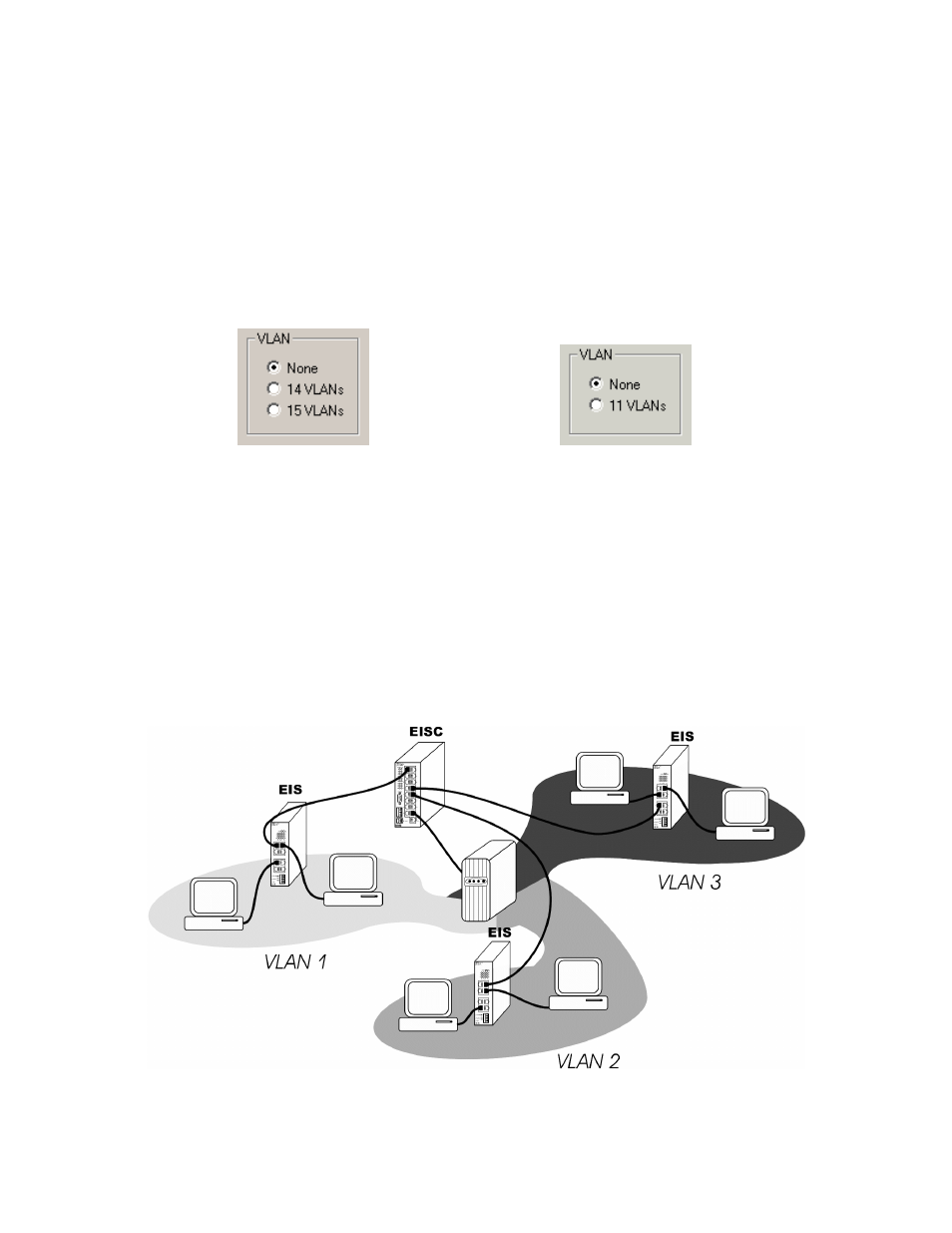Port-based vlan function – Contemporary Control Systems EISC Configurable Switches User Manual User Manual
Page 24

TD021000-0MB
24
7.2.6.2
Port-Based VLAN Function
In the Advanced Settings window, port-based (also called Layer 1) VLAN functionality
can be selected. The number of VLANs available varies with the EISC model.
Model ESIC16-100T supports 14 or 15 VLANs as shown in Figure 22. If 14 VLANs are
chosen, each of Ports 1–14 becomes an independent VLAN. All 14 VLANs can
communicate with Ports 15 and 16 which are termed common ports. If 15 VLANs are
defined, Port 15 ceases to act as a common port and acts, instead, as one of the
independent VLAN ports — and then Ports 1–15 can communicate with the only
remaining common port, Port 16.
Figure 22 — VLAN Options :
EISC16-100T
Figure 23 — VLAN Options
EISC12-100T/FC & EISC12-100T/FT
Figure 23 depicts the VLAN options for models EISC12-100T/FC and EISC12-100T/FT.
As shown, each 12-port model can support 11 VLANS, with Port 12 (one of the fiber
optic ports) performing the function of the common port.
When VLANs are enabled, a frame received from a VLAN port will only be forwarded to
the common port[s]. If the destination port belongs to another VLAN, the frame will be
discarded. If the source of the frame is a common port, then the frame can be
forwarded to any destination. This topology allows networks to share a server or router
via the common port[s], but use different VLANs for security or performance reasons.
Figure 24 — VLANs with a Common Server
